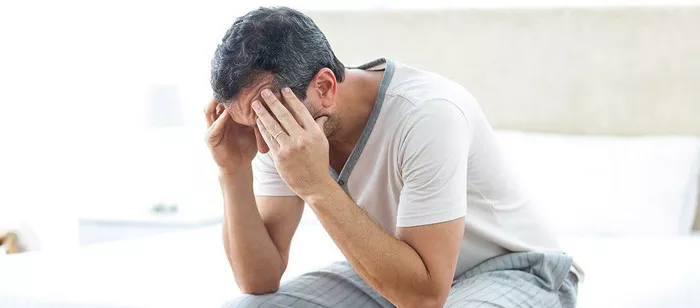Varicocele is a medical condition that occurs when the veins within the scrotum become enlarged and swollen. It is similar to varicose veins that people may experience in the legs, but varicocele specifically affects the veins in the scrotum. This condition can cause discomfort and pain, and in some cases, it can impact fertility. Understanding where the pain associated with varicocele is felt is important for individuals who might be experiencing symptoms.
This article will provide detailed information on where varicocele pain is felt, what causes it, and how to manage the discomfort. We will also explore the different sensations of pain and the factors that can influence its intensity.
What is Varicocele?
Before we focus on where varicocele pain is felt, it’s important to understand what the condition is and how it develops. The scrotum contains a network of veins known as the pampiniform plexus, which helps regulate the temperature of the testes and drain blood from the testicles. When these veins become dilated and swollen, it leads to varicocele.
This condition typically develops on the left side of the scrotum but can occur on both sides. It is more common in men aged 15 to 25 years, though it can affect men of any age. Varicocele can cause discomfort, and in some cases, it may lead to infertility by increasing the temperature in the scrotum and affecting sperm production.
Where is Varicocele Pain Felt?
The pain associated with varicocele can vary in location, intensity, and frequency. It is important to note that not all men with varicocele experience pain. Some men may have the condition without any symptoms, while others may feel a significant amount of discomfort.
1. Pain in the Scrotum
The most common location for varicocele pain is the scrotum itself. The pain may feel like a dull ache, a feeling of heaviness, or a sharp pain. Some men describe the pain as a constant, mild discomfort, while others experience it intermittently, often following physical activity or after long periods of standing.
The swelling of the veins in the scrotum can lead to a sensation of fullness or pressure, contributing to the discomfort. This pain is usually felt on the left side of the scrotum because varicocele most commonly affects the left testicle. However, it is also possible to feel pain on the right side or both sides in some cases.
2. Pain in the Testicle
Varicocele pain can also radiate to the testicle itself. Some men experience pain that is sharp or throbbing in the testicle. This sensation can be more noticeable during physical activity, such as lifting heavy objects, exercising, or even during sexual intercourse.
The pain in the testicle may be constant or it may come and go, depending on the severity of the varicocele. It can be intensified by increased blood flow to the area, such as during exercise or when standing for prolonged periods.
3. Pain in the Groin Area
In some cases, the pain from varicocele can radiate to the groin area. This can occur due to the enlarged veins pressing against surrounding structures, leading to discomfort in the lower abdomen or groin. While this type of pain is less common, it is not unusual for individuals with varicocele to experience some degree of groin pain as well.
The groin pain may feel like a mild ache or a sensation of tightness, and it can be aggravated by movement or prolonged standing. In some cases, groin pain may be mistaken for other conditions, so it is important to consult a doctor if you experience any persistent or unusual pain in this area.
4. Pain After Prolonged Standing or Physical Activity
Varicocele pain often worsens after standing for long periods of time or engaging in strenuous physical activity. This is because the veins in the scrotum become more dilated when blood flow is not effectively drained from the area. As the veins swell, the discomfort and pain may intensify.
For men who are involved in physical activities or jobs that require extended periods of standing or heavy lifting, the pain may become more noticeable toward the end of the day. In some cases, the pain may be relieved by lying down or resting, as this helps improve blood flow and reduce pressure on the veins.
5. Pain During Sexual Activity
Some men with varicocele experience pain during or after sexual activity. This discomfort may be caused by increased blood flow to the area, which can exacerbate the swelling of the veins. The sensation of pain can vary from a mild ache to sharp or throbbing pain.
While not all men with varicocele will experience pain during sexual activity, those who do may find that the pain is most noticeable during ejaculation or sexual arousal. This can cause distress and impact one’s sexual function or satisfaction. If sexual pain persists, it is important to consult a healthcare provider for further evaluation.
6. Pain in the Lower Back or Abdomen
Although less common, some men may feel referred pain from their varicocele in the lower back or abdomen. This can occur because the body’s nerve pathways may transmit pain from one area to another. If you experience lower back pain in conjunction with scrotal or groin pain, it is important to inform your doctor, as this could be related to varicocele or another underlying issue.
7. Changes in Pain with Temperature
Temperature changes may also influence varicocele pain. Warm weather, hot showers, or increased body heat can worsen the pain in some individuals, as these conditions can cause blood vessels to dilate further. On the other hand, applying a cold compress to the scrotum may help reduce swelling and provide temporary pain relief.
8. Pain Severity Varies from Person to Person
The severity of varicocele pain varies significantly between individuals. Some men experience mild, occasional discomfort that does not interfere with daily activities, while others may suffer from more intense, persistent pain. In some cases, varicocele may be asymptomatic, meaning that there is no pain at all.
The intensity of the pain may also change over time. For example, it may be worse during periods of physical activity or in the evening after a day of standing. In other cases, pain may be constant but vary in intensity, becoming more pronounced when the condition worsens.
What Causes Varicocele Pain?
The pain associated with varicocele is primarily due to the enlargement of veins in the scrotum. The dilated veins cause blood to pool in the scrotum, leading to pressure and discomfort. Other factors that may contribute to the pain include:
- Increased Blood Flow: Physical activity, heat, or standing for long periods can increase blood flow to the affected veins, causing more pressure and pain.
- Testicular Temperature: Varicocele can raise the temperature of the testicle, which may negatively affect sperm production and lead to discomfort.
- Vein Inflammation: The veins may become inflamed, further contributing to the pain.
When to See a Doctor
If you experience pain in the scrotum, testicles, or groin area that lasts for more than a few days or becomes progressively worse, it is important to consult a doctor. While varicocele can be managed with conservative treatments such as pain relievers and lifestyle modifications, in some cases, surgery or other interventions may be necessary to reduce the pain and address the underlying condition.
In addition to pain, varicocele may affect fertility, so if you are having difficulty conceiving, it is also advisable to speak with a healthcare provider.
Conclusion
Varicocele pain is most commonly felt in the scrotum and testicle, but it can also radiate to the groin, lower abdomen, and lower back in some individuals. The pain can vary in intensity, and factors such as physical activity, temperature, and prolonged standing can exacerbate discomfort. If you experience persistent or worsening pain, it is important to consult a doctor for a proper diagnosis and treatment options. With appropriate management, varicocele-related pain can be alleviated, and potential complications, such as fertility issues, can be addressed.
Related topics:

























